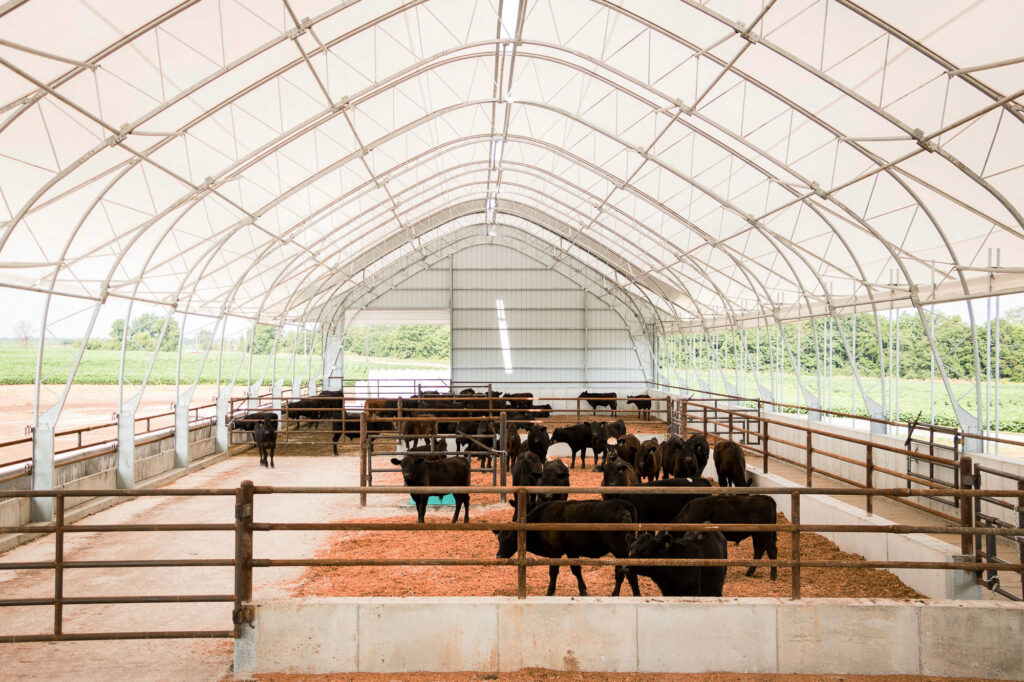1. Up-front and long-term costs
Fabric-covered buildings are typically more affordable than traditional barns because they require less groundwork and fewer construction materials. The durable cover on an Accu-Steel fabric-covered structure can also help farmers reduce energy costs by providing natural light and ventilation.
Traditional barns often call for more upfront investment from farmers to cover building material expenses like wood, steel, and concrete. Additional building permits and more contracting and construction expertise may also add to the cost of a traditional barn.
2. Conception to construction timelines
Hoop barns can often be assembled and installed faster than traditional barns, a benefit for farmers needing seasonal storage for grain, equipment, and fertilizer, or livestock shelter during extreme heat or cold. Accu-Steel fabric-covered buildings can also be constructed on different foundations including I-beams, pre-cast concrete blocks, and more, speeding up construction time without disrupting your daily work.
Because traditional barns are permanent structures and many have complex designs, they generally require more time to design and build. When constructing a traditional barn, significant groundwork is needed to install a permanent foundation. That means cold weather locations may be delayed until spring thaw, while southern locations may experience regular setbacks due to rain.
3. Ability to withstand the elements
Fabric-covered structures from Accu-Steel are incredibly durable and reliable, even in extreme weather. Every building is designed and engineered to withstand your region’s wind and snow load. In addition, Accu-Steel’s steel trusses are hot-dip galvanized for maximum corrosion protection, which gives farmers peace of mind in cattle buildings and fertilizer storage structures.
And, the fabric used on Accu-Steel buildings is made with Enduro-Loc™ technology. It’s the most durable cover on the market today and carries a 20-year warranty. If a section of fabric rips or tears on a hoop building, it can be quickly and easily replaced with minimal labor and expense.
Traditional barns, on the other hand, can be more difficult to maintain based on the building materials used. Ensuring that your traditional barn is protected from wood rot and pest infestations can be costly. Corrosion can also be a challenge for traditional buildings when storing fertilizer and grain. And, if repairs are needed for a traditional barn, it may take weeks or months depending on the type of damage, and the availability of materials and labor.
4. Compatibility with climate conditions
Built around you
Before you make a large building investment in your operation, make sure you have all the facts about your options—including which type of barn may be best for your farm’s unique needs.
Start by talking to the ag experts at Accu-Steel to see if an affordable Accu-Steel fabric-covered building may be the right choice for you and your farm.

